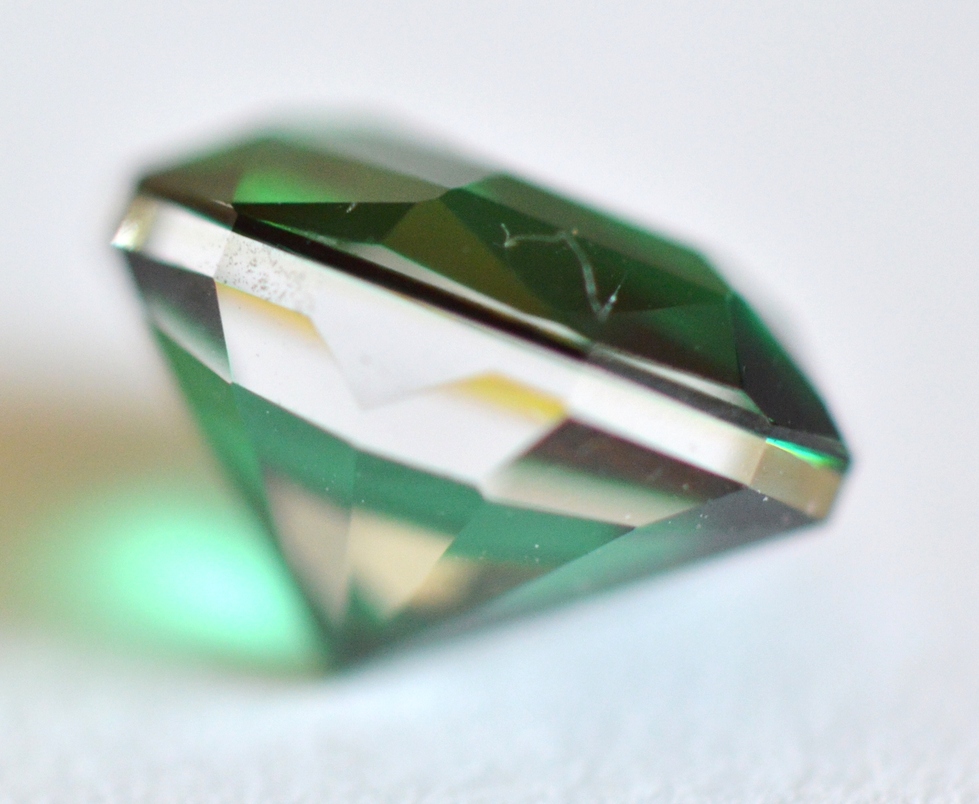
Soude emeralds
02.05.17
Liar Liar, don't trick the buyer!
When it comes to gemstones, sometimes it can be very hard to tell the difference between natural or treated, synthetic or simulant. Today we are going to give out some pointers about a convincing Emerald simulant with a fancy name Soude Emerald.
1. As you have guessed the stone is not a natural emerald, it only looks to be similar in appearance. Actually, the stone is composed of two separate materials attached to each other.
2. Gemstones making up the crown and pavilion are not even green, usually they are colourless.
3. Soude Stones are commonly made from beryl, quartz and synthetic spinel.
4. So why is it emerald-green? Blame it all on the thin slice of forest green lead glass that is cemented between two colourless materials. However, nowadays the use of coloured glue is more common.
5. Free from its setting, the simulant can, of course, be easily detected by viewing from the sides. Immersing the stone in water makes this central coloured layer more obvious.
6. Also, most of the stones will have quite distinct spherical bubbles, and crazing of the glue can be seen when viewed under loupe or microscope.
7. Alternatively, the stone can be tested with gemmological tools, like refractometer, spectrometer and others, which will give out differing readings to emerald.
Beware some of the tests can show similar results if the stone is made out of other beryl varieties.
Although now Soude Emeralds are not very common, they have been extensively used over the years and can be found in many antique and vintage jewellery.
Zhanna @ IGR London




